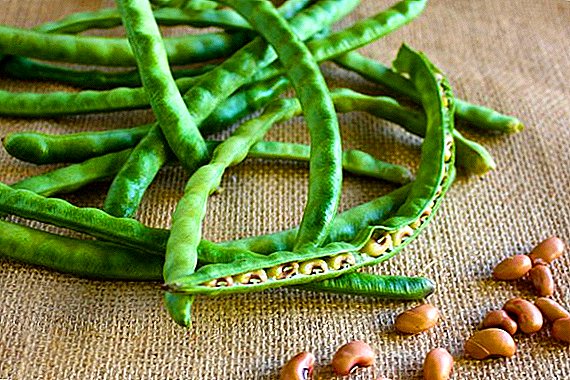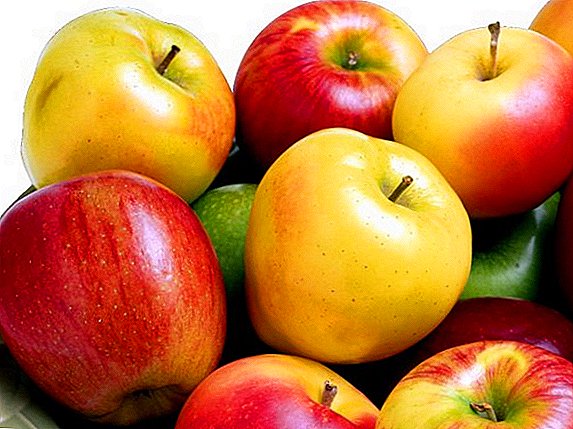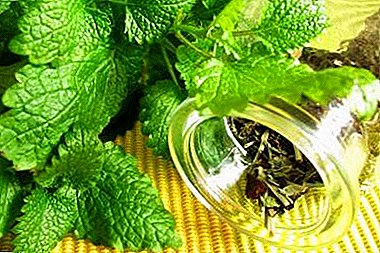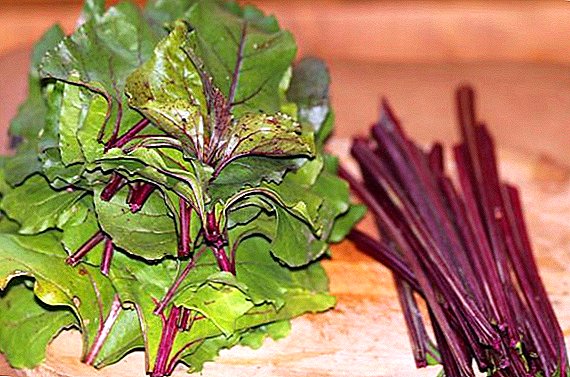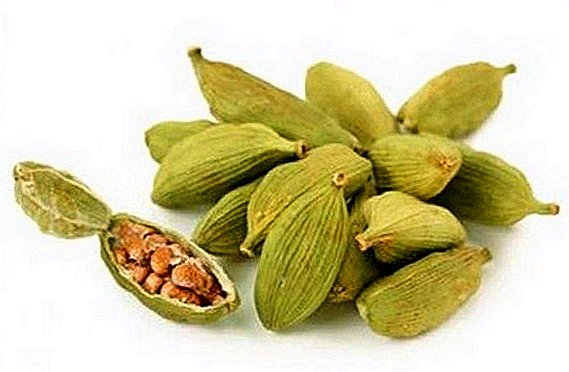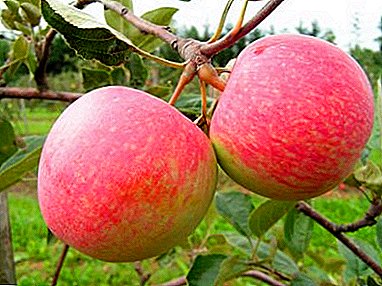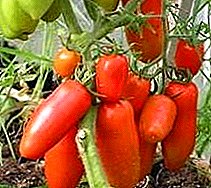
One of the popular vegetable crops in the backyards is Bulgarian pepper. To get the necessary vitamins after a long winter, every gardener or summer resident is always looking for ways to harvest vegetables before.
Pepper heat-loving plant and does not grow too well in open ground.
To solve this issue, there is no need to invent a bicycle, this is a well-known greenhouse cultivation method that speeds up the process of harvesting. And so, we can distinguish the postulate: Bulgarian pepper - growing in the greenhouse, a pledge of high yields!
Variety selection
Indoor you can grow a variety of varieties, differing in the size and color of fruits, their shape and shades of taste. Bulgarian pepper can be cone-shaped, elongated, oval or spherical, colors range from dark green to pale yellow, red or orange. The size fruit fluctuates from 1 to 30 cm in length.
In areas with a temperate climate, in the film greenhouse, very early ripening and early peppers can be grown without additional heating. Their ripening period is from 90 to 110 days after the appearance of the first shoots.
Desirable to choose plants with compact or medium-sized shrubs suitable for limited space greenhouses. In winter heated greenhouses you can grow any variety, focusing on taste, appearance and juiciness of the fruit. Possible planting of peppers with different periods of the growing season, allowing to get crops until late autumn.
In addition to early ripe varieties it is recommended to try late, the period of growth and maturation of which lasts up to 150 days. Late-ripening peppers have a very interesting taste, high juiciness and a large size of fruits, besides, they are rarely found on the market.
 Among the popular varieties and hybrids:
Among the popular varieties and hybrids:
- Early maturing: "Ilya Muromets", "Orange miracle", "Green miracle", "Karapuz", "Tenderness", "Player", "Winnie the Pooh", "Ruby stars". Suitable for film greenhouses, resistant to pests.
- Medium early: "California miracle", "Swallow", "Firstborn of Siberia", "Nochka", "Golden rain", "Gift of Moldova". Mid-early varieties and hybrids have small fruits, the yield in the soil is low, in greenhouses, it increases significantly.
- Middle late and late: "Garden Ring", "Albatross", "Paris", "Lyudmila", "Sailor", "Vivaldi", "Le Figaro". Practically they are not grown in the open ground of the middle zone; they give good yields in heated greenhouses. Fruits are stored for a long time and have an impressive size.
Greenhouse requirements
Shelter for pepper can be heated or not having additional heating. An unheated greenhouse is suitable for early-maturing varieties, it allows you to achieve a good and fast harvest in regions with a temperate and warm climate. Such greenhouses build without foundation, on wooden or metal frames.
Cold greenhouse can be covered with film or glass. Some growers use disused window frames. The approach is economical, but such a greenhouse will have to be repaired before the start of each season.
Capital winter greenhouses more practical build on a solid foundation, possibly penetrating into the ground by half a meter. As a skeleton, welded metal structures with a corrosion-resistant coating are used.
The design must be equipped with vents, double doors and lamps for lighting. It is possible to heat the greenhouse with the help of boilers or wood-burning stoves. The drip irrigation system is used only in expensive industrial greenhouses, in more simple watering spend from buckets or hoses, directly under the root plants.
Peppers can be grown together with other heat and moisture-loving crops. Ideal neighbors for them - cucumbers and radishes. Bell peppers it is undesirable to plant together with greens and tomatoes. No less dangerous neighbor - bitter pepper. When placed in the same greenhouse, it is possible to pollinate, sweet fruits will get an unpleasant bitter taste.
Features of growing
 First stage - seed selection for sowing. They must be fresh, two years after harvest, seed germination is sharply reduced.
First stage - seed selection for sowing. They must be fresh, two years after harvest, seed germination is sharply reduced.
Before sowing, the material can be soaked for 10-12 hours in a growth stimulant solution. Thereafter the seeds are washed and wrapped in a wet cotton fabric for spitting.
For greenhouse growing seeds can be sown in peat pots or in boxes. Landing is conducted in February or early March., since the germination period takes at least 7 days, and often lasts up to a month. Depth of seed placement should not exceed 10 mm. Capacity with seeds covered with glass or film and put in a warm, well-lit place.
Seedlings can be grown in an apartment or in a year-round heated greenhouse. For successful germination seeds of pepper need good humidity and temperature 20-25ºC. After the appearance of the entrances, the temperature in the room is lowered, the plants begin to harden, removing the glass at certain intervals.
2 weeks after entering the seedlings water the solution complex mineral fertilizers. At the age of 2 months, the grown peppers are quite ready to be transplanted to a permanent place in the greenhouse. Plants are placed at a distance of 30 cm from each other.
The soil should be fairly light, neutral acidity. It is recommended to add peat and sand to garden land. Soil need well loosen and make ash in it, humus or mineral fertilizers (potash, superphosphate).
Fresh manure is not recommended, it can lead to a massive fall of flowers and excessive growth of bushes.
Basis of care for peppers - timely watering warm defended water. Watering is carried out only at the root. Plants are very moisture-loving and do not tolerate even a short-term drought. The level of humidity in the greenhouse will help maintain open containers with water, as well as frequent watering of the floor and glass.
Occasionally need to air the greenhouse. The ideal temperature is 18-25ºC, a cold snap or exhausting heat are equally undesirable. Plants do not tolerate the average daily temperature drops.
Pepper likes frequent and abundant feeding. Some growers add a weak solution of mullein with each watering. In the ground, you can make and balanced mineral complexes. After year intensive use topsoil in the greenhouse need completely replaceThis contributes to higher yields.
 Bulgarian pepper does not tolerate heavy, flattened soil, reacting with slow growth and lack of ovaries. At least 1 time per week it is necessary to loosen the soil between the plants, ensuring the flow of oxygen to the roots.
Bulgarian pepper does not tolerate heavy, flattened soil, reacting with slow growth and lack of ovaries. At least 1 time per week it is necessary to loosen the soil between the plants, ensuring the flow of oxygen to the roots.
If there is no possibility of regular loosening, the soil needs to be mulched humus, sawdust, straw or husk of sunflower seeds.
A watering hole is left around each plant. For proper development of the bush and the formation of ovaries, regular removal of leaves on each plant is necessary. On the bush leave no more than 2 strong side shoots, the rest pinch.
Sure to leaves and shoots are removed below the main branch zone. This technique contributes to proper insolation, the plant does not spend strength on building up green mass, concentrating on the formation of ovaries.
Pepper bushes are very fragile, they are easy to damage during processing. For greenhouses better to choose compact plantswithout sprawling side shoots. Stretched stems must be tied up, otherwise they will break under the weight of the fruit.
Peppers of full physiological maturity have a bright color, fully corresponding to the variety, and a pronounced taste. Such fruits should be eaten immediately, they are not subject to storage. Harvest removed in the morning, carefully cutting off or tearing off fruits together with a short stem.
Delicious and juicy Bulgarian pepper rather unpretentious. With a well-equipped greenhouse, compliance with the regime of watering and feeding even inexperienced vegetable grower can achieve excellent yields. Having obtained good results, one can proceed with experiments with varieties and even selection work.
Useful tips on growing peppers in the greenhouse, see the video below:


